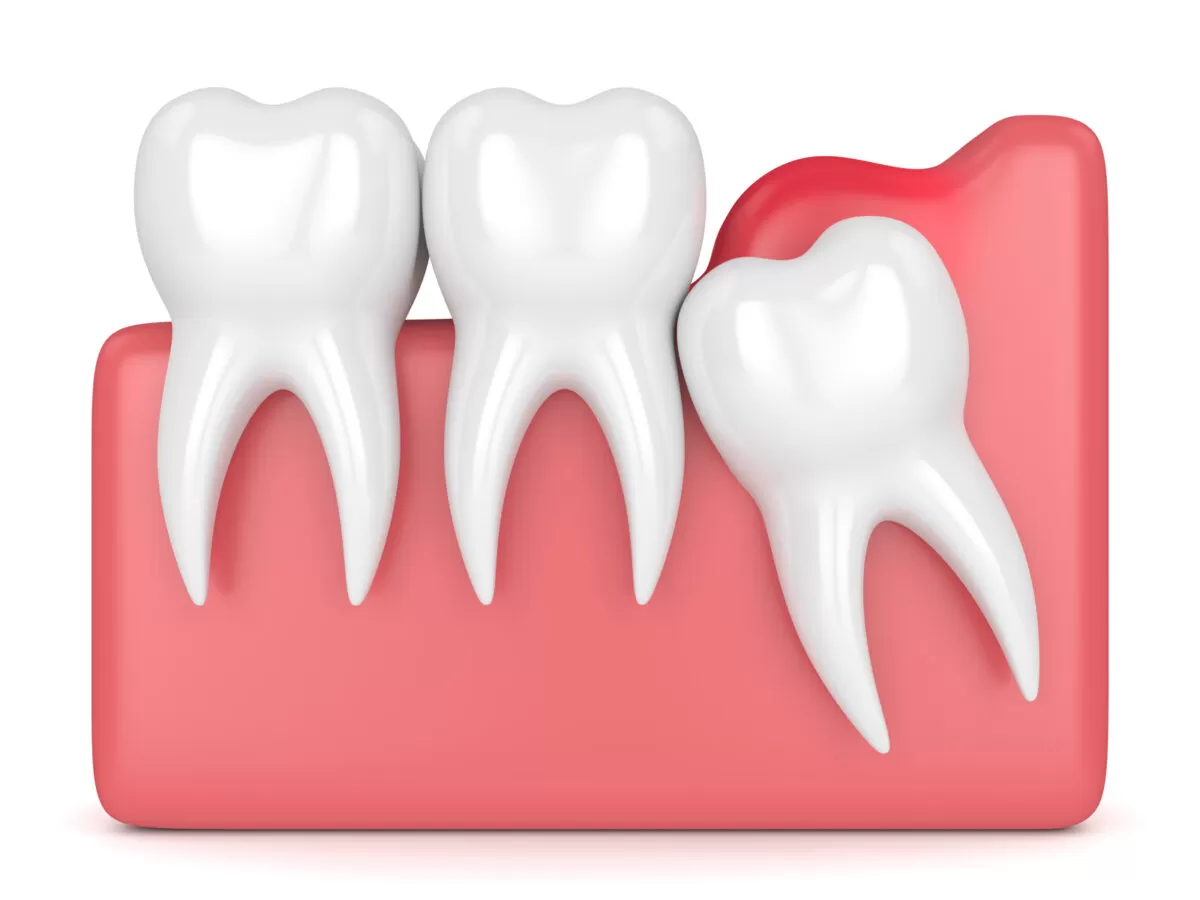Pericoronitis
Pericoronitis is inflammation of the soft tissues surrounding the crown of a partially erupted tooth,[1] including the gingiva (gums) and the dental follicle.[2] The soft tissue covering a partially erupted tooth is known as an operculum, an area which can be difficult to access with normal oral hygiene methods. The hyponym operculitis technically refers to inflammation of the operculum alone.
Pericoronitis
Other names
Operculitis
48 clinical pericornitis.jpg
Pericoronitis associated with the lower right third molar (wisdom tooth).
Specialty
Dentistry
Pericoronitis is caused by an accumulation of bacteria and debris beneath the operculum, or by mechanical trauma (e.g. biting the operculum with the opposing tooth).[3] Pericoronitis is often associated with partially erupted and impacted mandibular third molars (lower wisdom teeth),[4] often occurring at the age of wisdom tooth eruption (15-26).[5][6] Other common causes of similar pain from the third molar region are food impaction causing periodontal pain, pulpitis from dental caries (tooth decay), and acute myofascial pain in temporomandibular joint disorder.
Pericoronitis is classified into chronic and acute. Chronic pericoronitis can present with no or only mild symptoms and long remissions between any escalations to acute pericoronitis.[7] Acute pericoronitis is associated with a wide range of symptoms including severe pain, swelling and fever.[3] Sometimes there is an associated pericoronal abscess (an accumulation of pus). This infection can spread to the cheeks, orbits/periorbits, and other parts of the face or neck, and occasionally can lead to airway compromise (e.g. Ludwig’s angina) requiring emergency hospital treatment. The treatment of pericoronitis is through pain management and by resolving the inflammation. The inflammation can be resolved by flushing the debris or infection from the pericoronal tissues or by removing the associated tooth or operculum. Retaining the tooth requires improved oral hygiene in the area to prevent further acute pericoronitis episodes. Tooth removal is often indicated in cases of recurrent pericoronitis. The term is from the Greek peri, “around”, Latin corona “crown” and -itis, “inflammation”.



